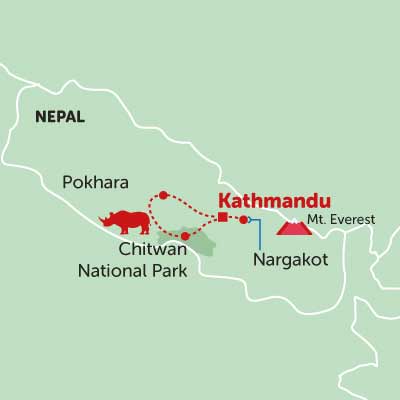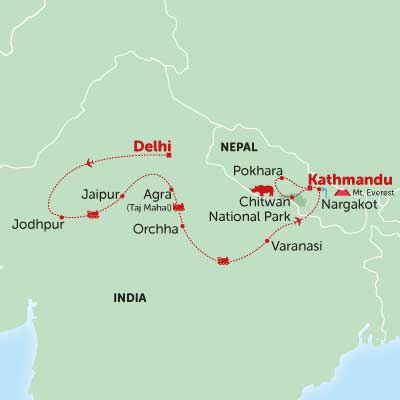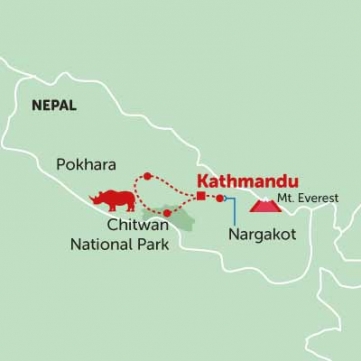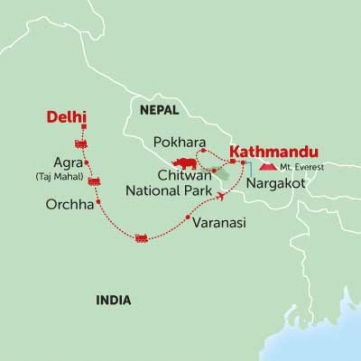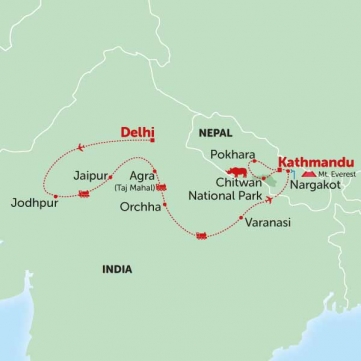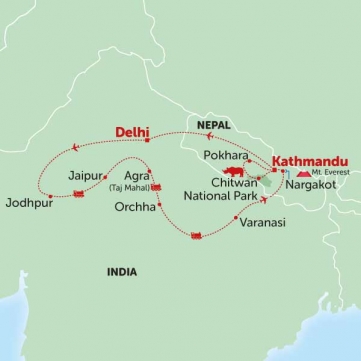Book NOW for $1 £1 €1 • Flexible Payments • No Change Fees • Private Departures Available
- Home >>
- Destinations >>
- Asia >>
- Nepal
Nepal tours,
trips & holidays
It’s widely known that Nepal is home to the Himalayas and the iconic Mount Everest - the highest mountain on earth with its peak at 8,848 meters. But did you know that there are actually over 90 peaks in Nepal that lie above 7,000 meters? The country is truly a paradise for everyone who is mesmerised by views of snow-capped mountains. On top of that a visit to Nepal will be an eye opener to new traditions and customs, as well as offering opportunities to catch a glimpse of exotic wildlife, such as the majestic Bengal Tiger.
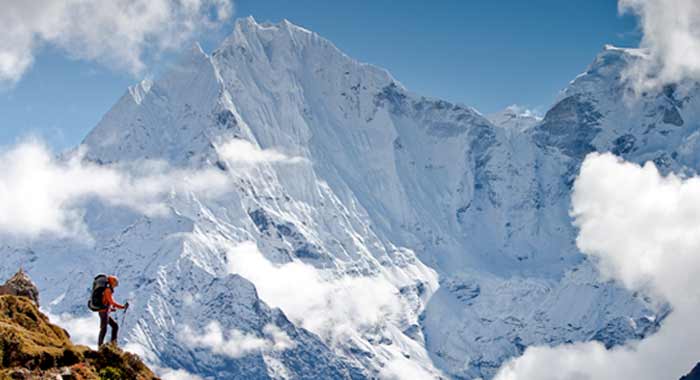
Group tours to Nepal with Tucan Travel
It can be overwhelming to set foot in a new country and learn about new rules and customs. Our group tours to Nepal are excellent for everyone who doesn’t want the hassle of organising their own travel and activities. We offer the perfect balance of a guided tour and freedom to choose optional activities tailored to the individual’s interest. We welcome all types of travellers on our tours including couples, solo travellers and friends travelling together. Our tours are created and run by Nepal specialists. From an 11-day trip that covers all the highlights of Nepal to the ultimate 29-day adventure of India and Nepal, we offer three itineraries for every taste.
India and Nepal Highlights
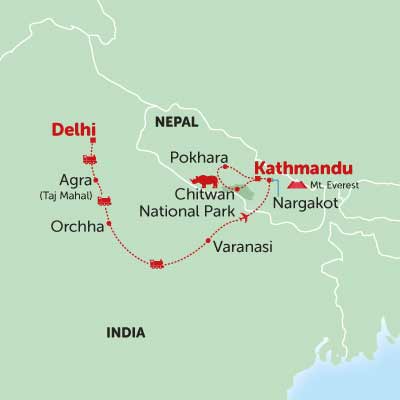
Duration:16 Days
Route:Delhi to Kathmandu
Tour Code:ININH
Top 12 places to visit in Nepal
1. Annapurna Foothills
The Annapurna Foothills are undoubtedly one of the highlights for many travellers visiting Nepal. On our group tours you will explore the foothills on a two-day trek with stunning and unspoilt views of the incredible Himalayas mountain range.
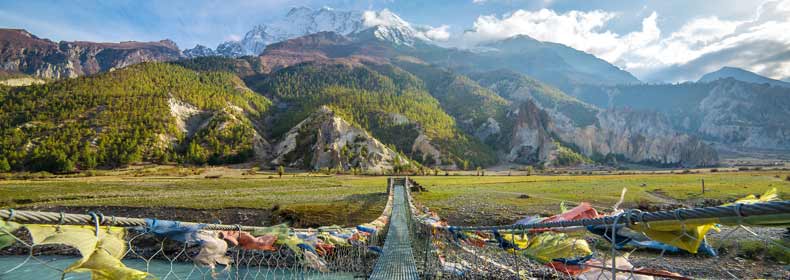
2. Chitwan National Park
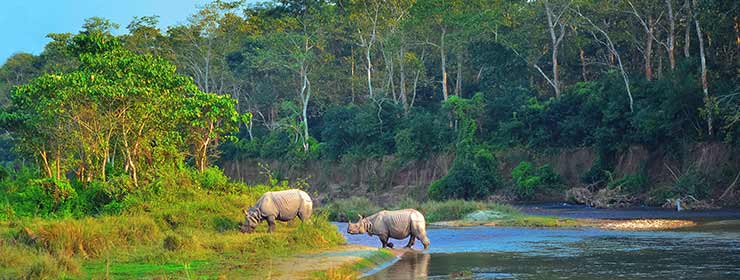
Nepal is largely known for its unspoilt nature and snow-capped peaks. That’s why it’s often a surprise to people when they hear that Nepal is rich in wildlife and one of the best places in Asia to experience a thrilling safari. You won’t be disappointed with a safari in Chitwan National Park, some of the most anticipated animals by visitors include the one-horned indian rhino, asian elephant, royal bengal tiger, sloth bear and the gharial - you can sometimes hear these referred to as the “big five” of Chitwan. On top of excellent animal spotting opportunities you can also enjoy a jungle walk or a canoeing adventure in the park.
3. Lumbini
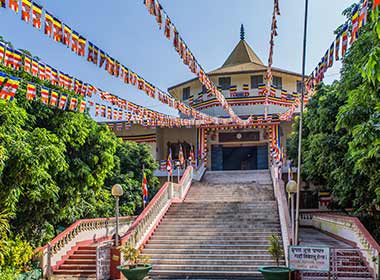
Situated in southern Nepal in the foothills of the Himalayas, Lumbini is said to be the birthplace of Gautama Buddha, ‘the apostle of peace and the light of Asia’ and founder of Buddhism. Make sure you head to the Maya Devi Temple, easily the most important site in Lumbini as this is where Buddah was supposedly born.
4. Pokhara
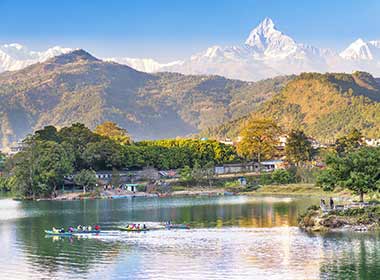
Pokhara is one of the main gateways to the stunning Annapurna Foothills. Our group tours also use Pokhara as the base for the Annapurna Foothills trek. Something many travellers only realise when they get to Pokhara is the raw beauty of the city. Enjoy breathtaking views of the mountains surrounding the city while going about your daily business and optional excursions, such as mountain biking and exploring temples.
5. Phewa Lake
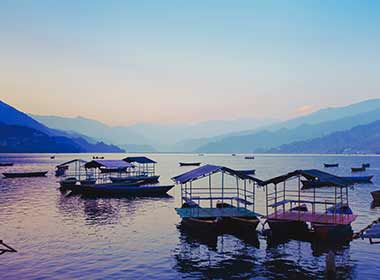
Phewa Lake is the second largest lake in Nepal and is also located in Pokhara. You can spend half a day at this dazzling lake without trying and we felt it’s only appropriate for this place to get its own mention. Slow down, take in the view and become mindful at the shore of the lake or if you fancy something more adventurous why not hire a boat or go paragliding?
6. Everest Base Camp
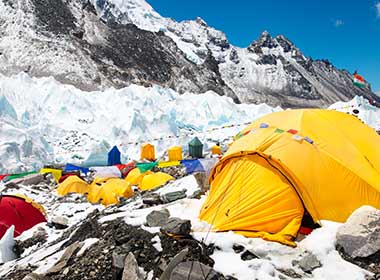
A trek to the Everest Base Camp is on the bucket list for many people. Although the trek to the base camp is a whole lot easier than to the peak of the highest mountain on earth and it’s an incredibly rewarding trek, it certainly is not for the faint of heart. If you do decide to make this trip then make sure you’ve got all the equipment and adequate travel insurance for your once in a lifetime journey.
7. Nagarkot
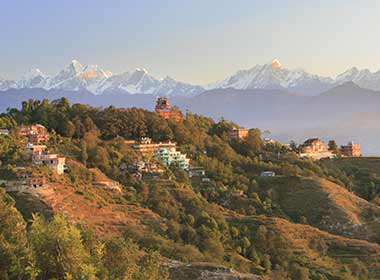
Nagarkot is situated roughly 30km east of the capital Kathmandu and is best known for magnificent views of the Kathmandu Valley and Himalayas. If you have enough of the bustling streets in Kathmandu then it might be time for a day trip to Nagarkot. Why not head here for sunrise and see the Himalayas come to life or enjoy one of the hiking trails? It takes around 1 ½ hours to reach Nagarkot from Kathmandu by car.
8. Kathmandu
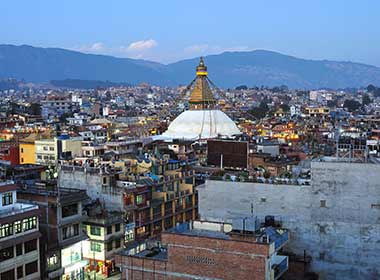
A visit to Nepal wouldn’t be complete without embracing the historic and chaotic streets of Nepal’s capital city Kathmandu. The city has many attractions to offer but one of the biggest pulls for visitors is the sheer number of stunning UNESCO World Heritage Sites - in fact Kathmandu Valley is said to have the highest number of sites in such a small area. Find out more about things to do in Kathmandu on our blog.
9. Ilam
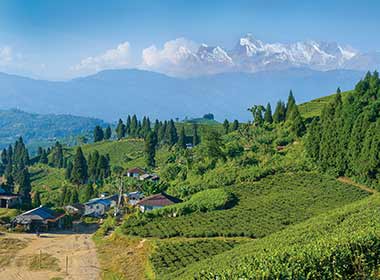
You can find the town Ilam in the eastern corner of Nepal. It’s quite a way from the main tourist areas Kathmandu and Pokhara but if you’re a tea lover the journey will be worth it. Ilam is best known for its production of tea and lush scenery and landscapes.
10. Patan
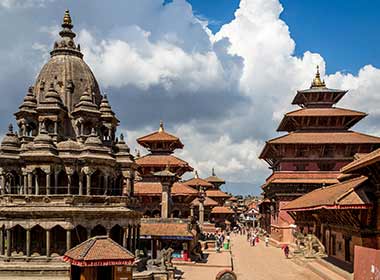
Patan, also known as Lalitapur, is a city south of Kathmandu and used to be an independent state. When you make your way down from Kathmandu to Patan, you’ll sense that there’s still an independent flair in the air. One of the main attractions in Patan is the magnificent UNESCO World Heritage Site Durbar Square, not to be confused with the Durbar Square in Kathmandu and Bhaktapur.
11. Bhaktapur
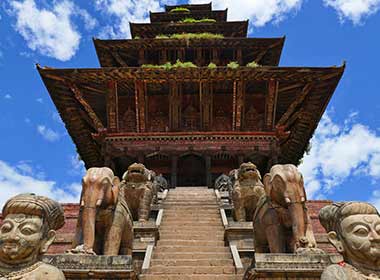
Bhaktapur can be found just outside of Kathmandu on the eastern borders of the capital. It takes roughly half an hour to drive from Kathmandu to “the cultural gem of Nepal” and is well worth a visit. Somewhat away from the prying eyes of tourists you can find another one of the three UNESCO protected Durbar Squares here, along with an abundance of temples, traditional architecture and culture to explore.
12. Sagarmatha National Park
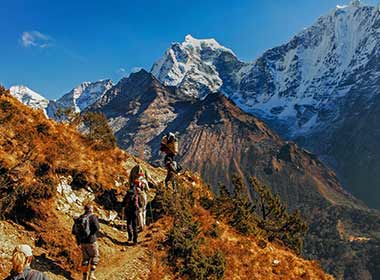
A temptation for any mountain-loving traveller, Sagarmatha National Park is a UNESCO World Heritage Site situated in the Himalayas northeast of Nepal. North of the park, towards the country’s border you’ll find the highest peak in the world - Mount Everest. The park offers breathtaking views, hiking trails and is home to rare wildlife such as the snow leopard, musk deer and Himalayan tahr.
Why book with Tucan Travel?
Travelling doesn’t need to break the bank. Group tours with Tucan Travel are the perfect way to explore what this incredible world has to offer, even if you’re on a bit of a budget. Our tours in Nepal are designed to be the perfect balance of value for money, authenticity and unforgettable experiences. As an adventure tour specialist, we work hard to provide a truly authentic experience. We are proud to maintain strong relationships with our accommodation and transport suppliers and our local guides. We only work with the best and take extra care to make sure we are supporting the local businesses and communities in a sustainable and ethical way. To keep the trip as authentic as possible, we predominantly use local, family run hotels and lodges, so the money spent on tours, gets pumped back into the local community rather than large corporate run chains. If you need any more reasons to book a holiday to Nepal with Tucan Travel, without boasting too much we have won numerous awards, picking up no less than 6 this past year! But don’t take our word for it, have a look at our TrustPilot reviews and see for yourself.
Nepal Travel Blogs
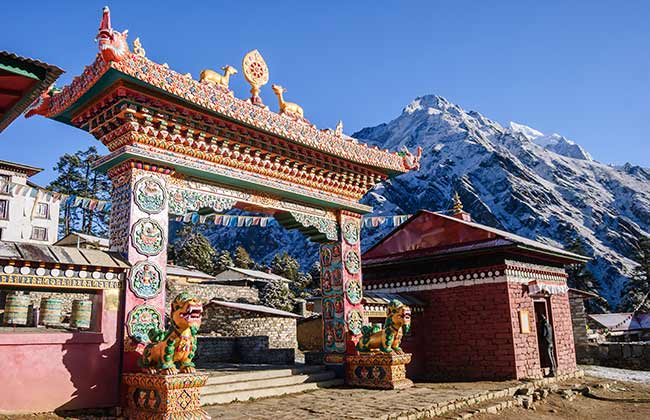
Top 10 things to do in Kathmandu
Are you thinking about making Nepal your next holiday destination? We hope you’re not just coming for the breathtaking Himalayas and are also planning to make a stop in the dazzling capital Kathmandu. If you have started your research on Kathmandu you’ll know that there are many things to see in Kathmandu, but there is only so much time and it can be difficult to narrow it down to the highlights.
We have summarised our favourite spots and experiences in Nepal’s capital. Keep on reading for our top 10 things to do in Kathmandu.
Why it's time to visit Nepal
2 years ago today Nepal was struck by a devastating earthquake. Our Nepal supplier, Rupan Giri has given his account on how the earthquake affected Nepal, and why it's so important to continue travelling to the country.
"The ground started shaking at around 11:58 am and it shook for about 72 seconds. At first everybody was confused as to what was going on but as soon as they realised that it was an earthquake everyone ran out to open spaces. Most of the people of Kathmandu and surrounding areas were living outdoors for more than a week, some even stayed out for almost a month. A lot of lives were lost and so were many heritage monuments.
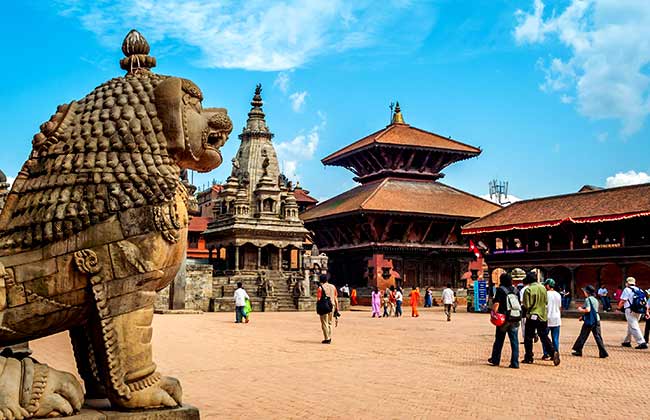
All Tours of Nepal
4 Tours
Nepal Travel Articles, Inspiration & Information
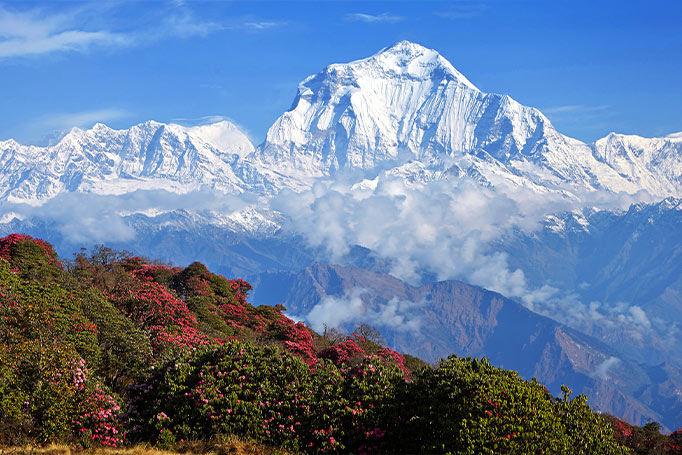
Trekking in the Annapurna Foothills
Nepal is a hikers paradise. Combining stunning peaks, tranquil lakes and charming villages, it remains a popular destination for adventure travellers. Nepal is home to 8 out of 10 of the world’s highest peaks, including the monstrous Mount Everest! Trekking in the Annapurna Foothills is a popular activity... Read more
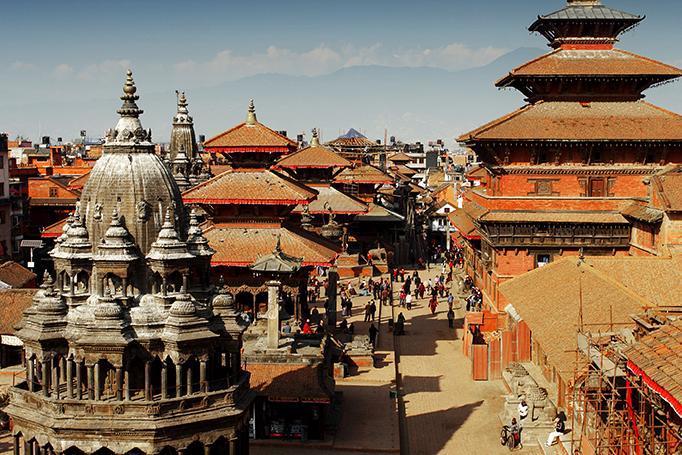
Best time to travel to Nepal and India
As the seventh largest country in the world, defining India’s weather is a tricky task. There are several climatic regions from the tropical climate of Kerala to the arid northwest of the Thar Desert. Neighbouring Nepal also has a mixture of climates; including alpine and subtropical.The most influential weather pattern is the annual monsoon which affects both India and Nepal at different times.. Read more
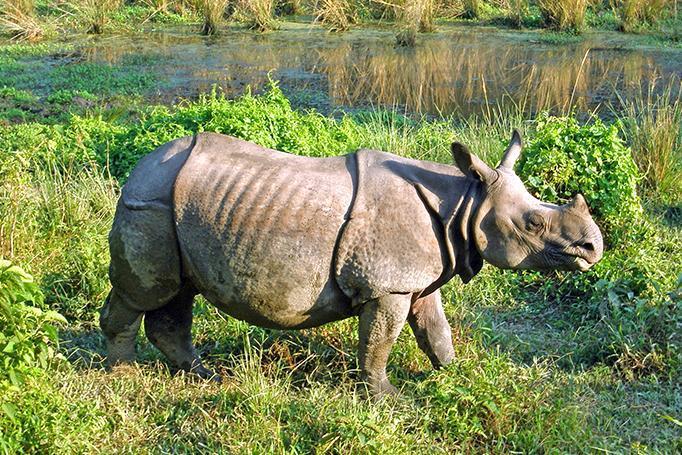
Spotting Rhino in Chitwan National Park
It was only a matter of minutes after stepping out of the dugout canoe when our guide, Bishnu came running out of the jungle to say that he had spotted our first rhino. The irony of the situation was not lost on me. Having spent two weeks in eastern Africa, we had spent days searching for the fascinating creatures but to no avail. Now, I was here in southern Nepal.. Read more
Independently Verified Travel Reviews From Past Clients
Nepal Travel Guide
Nepal Travel Guide
Renowned by backpackers and revered by mountaineers, Nepal has had an alluring draw for travellers and adventurers for many years. And why not; its scenery ranges from lush terraced farmland and emerald valleys, to sub-tropical jungle, arid windswept alpine plains and the highest mountain peaks on earth. In addition, Nepal’s culture is a diverse overlap of neighbouring India and China with Hinduism and Buddhism both featuring and combining to make a culture that is uniquely Nepalese. Enjoy the cultural richness and the trademark hospitality of this tiny nation while exploring some of the most dramatic scenery on the planet.
Money
Nepal’s currency is the Nepalese rupee (symbol: Rs) which is broken down into 100 paisa. Most commonly used banknotes are in 5, 10, 25, 50, 100, 500 and 1000 rupee denominations. Coins come in 1, 2, 5, 10, 25 and 50 rupee denominations.
Nepal is an inexpensive country and your money will go a long way here. A mid-range meal in Kathmandu shouldn’t be more than US$7-10. Activities vary in price from US$5-20 for biking, kayaking and jeep safaris to US$100 for paragliding. Many tourist businesses quote and may expect payment in US dollars, so it’s worth bringing some US currency with you. Pounds sterling and Euros are also commonly accepted. Large notes may not be accepted for smaller purchases and if possible, try and obtain rupee notes in small denominations.
ATMs are widely available in Nepal and should accept major international cards. If you are travelling into the mountains, remote areas or jungle you should ensure you have enough cash to cover your travel until you return to a populated area. It is best to carry your travel money in a mixture of cards and cash. Travellers cheques are accepted in major hotels and banks and the most readily exchanged are those in US dollars or pounds sterling.
Major Cities and Towns in Nepal
Located towards the centre-south of the country, Kathmandu is the largest city, national capital and major travel hub. The narrow medieval alleys, ornate temples and market stalls of Old Kathmandu are great for exploring. Outside the city, medieval cities of Patan and Bhaktapur are found in the Kathmandu Valley. South-east of the capital near the border, Biratnagar is the second largest city in Nepal and a major commercial hub although it receives few visitors. West of Kathmandu, Narayangarh and twin city Bharatpur are located in the Chitwan Valley. There is an airport here and it is an important hub for travellers coming from or travelling to India, north to Pokhara or taking a safari into Chitwan National Park. North of here is Gorkha with its impressive fortress and Pokhara, a popular lakeside resort town framed by snowy peaks.
Electricity
Power in Nepal is supplied at 220 volts and the most common socket types is for two round-prong plug type such as is found in Europe or three round-prong plug such as that found in India. Power outages are frequent (read daily) and lengthy and you should take a surge protector for delicate electrical equipment such as laptops as well as a universal adaptor.
Etiquette and Culture
The people of Nepal are essentially the combination of two peoples, the Sino-Mongoloid from the north who follow the Buddhist faith and the Hindu Indo-Caucasians from the south. In reality, Nepal is a complex and diverse mix of many cultures and ethnicities, woven and interlaced in the intricate fabric that is the Nepalese culture. While Nepali is the official national language, it is estimated that there are 123 languages spoken in Nepal with less than half the population speaking Nepali as their mother tongue. For many it is a second language, and acts as the lingua franca of the country. English has also become the predominate language among the educated.
A formal greeting is to say Namaste while pressing your palms in a prayer-like fashion in front of your chest. Even more polite is Namaskaar, which may be used to address elders. Danyabaad means thank you, although it is not often used in conversation and saying thank you in English is widely understood.
When eating always use your right hand, the left hand is reserved for cleaning oneself and is considered unclean. Once food has touched your lips it is considered polluted, so do not offer food to others that you have taken a bite of and when sharing a drink from a communal vessel try not to let it touch your lips.
Nepalis are tolerant but conservative when it comes to clothing. Men should not go shirtless and preferably wear long trousers. Women should cover their shoulders and wear long trousers or skirts below the knee.
Geography
Nepal is landlocked, bordered by India and Tibet autonomous region of China. It is around 800km long and between 90 and 230km wide, having a total land area slightly larger than that of England. Along much of its southern border runs the fertile plains of the Terai which break into several east to west oriented chains of hills increasing in height as they run towards the Greater Himalaya and Tibetan Plateau in the north. This elevation gives Nepal the largest altitude variation in the world, from just 100m above sea level to Mt Everest, the highest point in the world, at 8848m.
History
The earliest recorded rulers of the Kathmandu Valley were the Hindu Mongoloid people called the Kirats from around the 7th or 8th century BC. There is archaeological evidence of early Buddhist influence in Nepal including the famous Ashoka column at Lumbini (birthplace of Gautama Buddha) and several shrines in the Nepal Valley. The Mauryan Empire (321-184 BC) in India also helped to further establish Buddhism in the region.
The rise of the Hindu Licchavi dynasty in the 4th or 5th century lead to the decline of Buddhism, but was also a golden era of culture and some of their monuments and stupas are still standing today. They also established trade and political relations with Tibet across the Himalayas until war between Tibet and China severed these contacts.
The Middle period in Nepal’s history is marked by the Malla dynasty from the 10th to the 18th century. They were responsible for introducing the first social and legal code, strongly influenced by Hinduism. In the 15th century Yaksa Malla divided the kingdom between his three sons, creating independent principalities of Kathmandu, Patan and Bhaktpur. In addition there were small principalities in the western and eastern hill areas.
In the 18th century the Gorkha, ruled by the Shah dynasty, began to gain power taking control of the Nepal Valley from the Malla in 1769. Ruler Prithvi Narayan Shah moved his capital to Kathmandu providing the foundations of the modern state of Nepal. The present monarch is a descendant of this dynasty. The Shah dynasty were expansionists, conquering an area ranging from Bhutan to Kashmir which was hemmed in by wars with China and Tibet in 1788-92, the Sikh kingdom in 1809, British India in 1814-16 and Tibet again in 1854-56. In 1846 the Rana family established political power in the region by conspiring with the queen regent to take over the country while the Shah ruler was relegated to an honorary position without power. The Rana family retained control of the country until 1951. Nepal was never colonised by the British, but gave Gurkha units to the British Indian Army and accepted British guidance on foreign policy. In return the British protected the Rana regime against foreign and domestic enemies.
When the British left India, the Rana family no longer had their support and anti-Rana forces allied with the Nepalese royal family to overthrow their authority in a revolution in 1950. Diplomatically supported by the Indian government the sovereignty of the crown was restored and the rebels led by the Nepali Congress gained positions in the administration along with demoted members of the Rana regime. A new constitution was written and Nepal held its first general election in 1959. However, the following year King Mahendra dismissed the government and arrested many of its members. A new constitution was written in 1962 establishing the crown as the absolute authority.
Succeeded by his son, British-educated King Birendra’s rule was marked by growing discontent leading to rioting and violence at the slow rate of development and rising cost of living. In 1980 he held a referendum to decide between a non-party or multiparty (parliamentary) system; the result was a slim majority against democracy meaning the country retained its 1962 constitution.
Despite this, growing discontent lead to moves towards democracy. A coalition interim government was formed in 1990 “to maintain law and order, develop a multiparty system on the basis of constitutional monarchy, draft a new constitution, and hold general elections”. A new constitution was written providing the framework for a constitutional monarchy and multiparty parliamentary political system. General elections were held in May 1991. In June 2008 Nepal’s monarchy came to an end and Nepal’s parliament chose its first president soon after.
Best time to travel in Nepal
Seasons
Nepal lies in the temperate zone and has four seasons, summer, spring, winter and autumn. It is also affected by seasonal monsoons which travel up the continent from the Bay of Bengal arriving in Nepal from mid-June until around September. Autumn (October-November) is the high season for tourists to the region as this is the time of year that offers the best visibility for trekkers. Spring is another popular time of year, as the rhododendron forests are in bloom bring a riot of colour to the landscape.
When to travel
Weather-wise, October and November are considered the best months as the air is clearest and visibility is at its best. It is also in these months that two of the biggest festivals in the calendar occur, Dasain which lasts 15 days and includes street processions and Tihaar (known as Diwali in India), the picturesque festival of lights.
December and January are the winter months. It doesn’t snow in Kathmandu and although it can be chilly, it is generally clear and stable. The lowlands have mild winters and this can be a lovely time to visit, while there are bitterly cold winds and snow at altitude. The Shiva Raatri festival falls in February or March which is marked by bonfires and most spectacularly by tens of thousands of pilgrims meeting at Pashupatinath, 4 kms east of Kathmandu.
February to mid-April are the spring months and the second most popular time of year to visit. The blooming rhododendron make the scenery burst with colour and it is one of the best times of year for viewing wildlife.
The pre-monsoon is from mid-April to June, with increased temperatures and humidity. The monsoon is when the country is at its greenest, fresh fruit and vegetables are abundant and the air is clean. Trails can be particularly muddy during these months.
Guide to food in Nepal
Countrywide, the staple diet is daal bhaat, a dish of lentils and rice often served with curried vegetables and pickles. This is typically eaten twice a day by locals, late morning and as an evening meal after the work of the day is complete.
In Kathmandu and Pokhara the range of food on offer is diverse including many western options. Tourist restaurants can be much more expensive than local options, a simple meal and drink from a local restaurant outside the tourist areas can cost as little as 100 rupees.
Momo, a popular dish brought from Tibet, is a steamed dumpling similar in appearance to ravioli and filled with vegetables or meat, served with chilli tomato sauce on the side. Fried momo are called kothe. Other popular snacks include Indian pakora, vegetables dipped in a chickpea flour batter and deep fried, bean curry and samosas.
Newari food is popular local cuisine of one Nepal’s many ethnic groups. Specialities are generally quite hot and revolve around four main ingredients: buffalo, rice, pulses and vegetables (especially radishes).
Indian food is also very popular and widely available, including curry dishes, Tandoori and various flat breads such as naan and paratha.
Tea (chiya) is a popular drink, which is traditionally prepared by brewing tea with milk, sugar and spcies including cardamom and ginger. Alcoholic beverages include a range of home-brewed liquors, especially in the hill areas, the most common are chang, raksi and thungba. Chang is similar to beer, brewed from rice, barley or corn. Raksi can be made from anything from fruit to grain and is generally strong. Thungba is a drink from the east of the country, made from millet grains.
Top Attractions and Highlights in Nepal
1. Kathmandu
Wander the capital’s old narrow alleys, carved temples and bustling markets. The riot of colours, sounds, smells and sights of this city can be overwhelming, but its marvellous medieval temples, squares and courtyards make it a rewarding city to explore.
2. Chitwan National Park
A World Heritage Site and wonderful opportunity to see jungle wildlife, taking a safari in Chitwan National Park offers the opportunity to see wild rhino, elephants, leopards and sloth bears if you’re very lucky as well as deer, monkey and hundreds of bird species. It is Nepal’s oldest national park and offers some of the best wildlife viewing opportunities in Asia.
3. Gorkha
The royal family’s ancestral home and location of an ornate ridge-top temple and the old royal palace complex, Gorkha Durbar.
4. Pokhara
A jewel in a set amongst emerald lake, forested hills and snowy peaks, this peaceful city offers travellers a retreat and opportunity for rest and recreation and is a stopover for many starting or finishing treks in the area. Explore the nearby Phewa Lake by boat with stunning views of the surrounding Annapurna ranges.
5. Bhaktapur
A charming town in the Kathmandu Valley with carved wooden structures and stone sculptures, this medieval city became the seat of one of the valley’s principalities in the 15th century. Of the three city-states from this period (the other two being Kathmandu and Patan), Bhaktapur is the best preserved.
6. Annapurna Circuit
Whether you are doing the full three-week trek, or a smaller hike of the region, the Annapurna Ranges offer stunning mountain views. Along the trek are scattered Hindu holy sites and Buddhist villages offering cultural insight as well as natural wonders.
7. Mt Everest
The roof of the world has lured mountaineers from all corners of the globe, but you needn’t be a hard core adventurer to visit Mt Everest. There are shorter, less strenuous hikes around the area including Everest Base Camp. It’s also possible to take a scenic flight ‘Everest Experience’ taking you over the Himalayas.
8. Patan
This city-state has long since been swallowed up by Kathmandu to become a suburb of the city, but has its own long history and tradition as a centre of arts and crafts. Also known by its Sanskrit name Lalitpur meaning City of Beauty, it is still characterised by elegant tiered rooftops and ornately carved temples.
9. Lumbini
A famous site of pilgrimage for Buddhists, Lumbini is the site where Siddhartha Gautama was born, otherwise known as Buddha. It is a site of ancient stupas, robed monks, a vibrant multi-hued prayer flags with a peaceful, spiritual atmosphere.
10 Interesting Facts about Nepal
1. Nepal has eight of the world’s 10 highest peaks.
2. Mount Everest has a Nepali name, Sagarmāthā, which means forehead of the sky.
3. Nepal is the only nation on earth to have a non-quadrilateral flag. It is made of two triangles one on top of the other. It is red with a blue border with a white sun and crescent moon.
4. Nepal has four World Heritage Sites: the Kathmandu Valley, Lumbini (the Birthplace of Lord Buddha), Chitwan National Park and Sagarmatha National Park.
5. Nepal has daily, lengthy planned power cuts in order to cope with the increasing demand for electricity.
6. Over 80% of the population of Nepal are Hindu.
7. Mount Everest was name in honour of Sir George Everest, a Welsh geodesist who completed a trigonometric survey of India.
8. The game elephant polo originated in Meghauli, Nepal. Since 1982 the World Elephant Polo Championships have been held in Tiger Tops, Nepal near the Chitwan National Park.
9. The yeti, or Abominable Snowman, is said to live in the mountains of Nepal, although no conclusive evidence of this has been found.
10. Lumbini in Nepal is one of the most sacred places for the Buddhist faith. It was here that the Lord Buddha was born in the year 623 BC.



